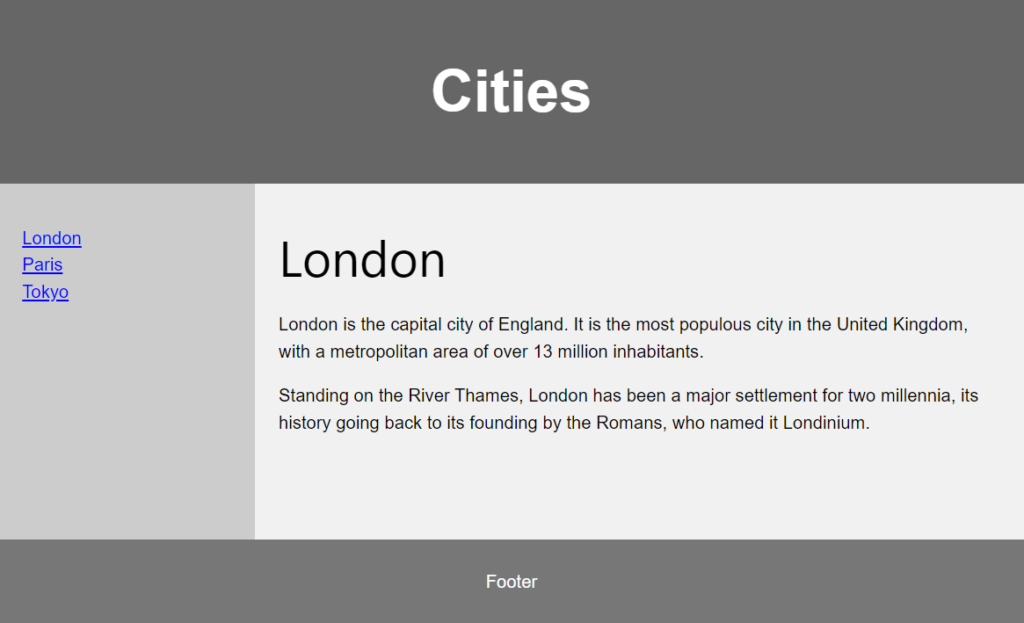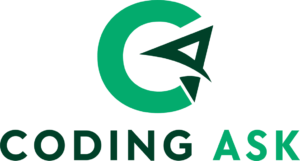HTML Layout
A file path indicates where a file is located within the folder structure of a website.


HTML Layout Elements

<header> – Defines a header for a document or a section
<nav> – Defines a set of navigation links
<section> – Defines a section in a document
<article> – Defines an independent, self-contained content
<aside> – Defines content aside from the content (like a sidebar)
<footer> – Defines a footer for a document or a section
<details> – Defines additional details that the user can open and close on demand
<summary> – Defines a heading for the <details> element
You can read more about semantic elements in our HTML Semantics chapter.
HTML Layout Techniques
There are four different techniques to create multicolumn layouts. Each technique has its pros and cons:
- CSS framework
- CSS float property
- CSS flexbox
- CSS grid
CSS Float Layout
Complete web layouts are frequently created with the CSS float attribute. Learning Float is simple; all you have to do is keep in mind how the float and clear properties function. Cons: Because floating elements are dependent on the document flow, their flexibility may be compromised. See our chapter on CSS Float and Clear for additional information about float.
Example

CSS Flexbox Layout
Flexbox ensures predictable behavior of elements when the page layout needs to adjust for various display devices and screen sizes.
See our CSS Flexbox chapter for additional information on flexbox.
Example

HTML layout
web page layout
multi-column layout
CSS layout techniques
float
flexbox
grid
CSS frameworks
W3.CSS
Bootstrap
HTML
HTML5
HTML tutorials
Learn HTML
Free HTML tutorials
HTML Example
HTML Explained
HTML layout is a fundamental aspect of web page design and development. It involves structuring the content and elements of a web page in a visually appealing and organized manner. There are several techniques and approaches to achieve effective HTML layout, each with its own advantages and use cases.
One of the most common layout methods is using the CSS float property. This allows elements to be positioned side-by-side, creating multi-column layouts. However, the float approach can be complex to manage, especially when dealing with responsive design.
More modern CSS layout techniques, such as Flexbox and Grid, provide more powerful and flexible options for creating complex layouts. Flexbox allows for easy control over the size, position, and alignment of elements, while Grid offers a grid-based system for precise positioning and sizing of content.
In addition to these native CSS layout techniques, there are also CSS frameworks like W3.CSS and Bootstrap that provide pre-built layout components and grid systems. These frameworks can greatly simplify the process of creating responsive and visually appealing web page layouts.
Mastering HTML layout is crucial for web designers and developers to create visually engaging and user-friendly websites. Understanding the various layout techniques and their appropriate use cases can help ensure the successful implementation of web page designs.
Additionally, popular CSS frameworks like W3.CSS and Bootstrap provide pre-built layout components and grid systems that make it easier to create responsive and visually appealing web pages. These frameworks often include features like responsive breakpoints, mobile-first design, and built-in grid systems.
Understanding the different HTML layout approaches and the tools available is essential for web developers to create visually engaging and user-friendly websites. By mastering these techniques, you can ensure that your web pages are well-structured, visually appealing, and optimized for various devices and screen sizes.
One of the fundamental layout methods in HTML is the use of CSS positioning properties, such as float, flexbox, and grid. These techniques allow you to control the placement and alignment of elements on a web page, enabling you to create multi-column layouts, sticky footers, and complex grid-based designs.
